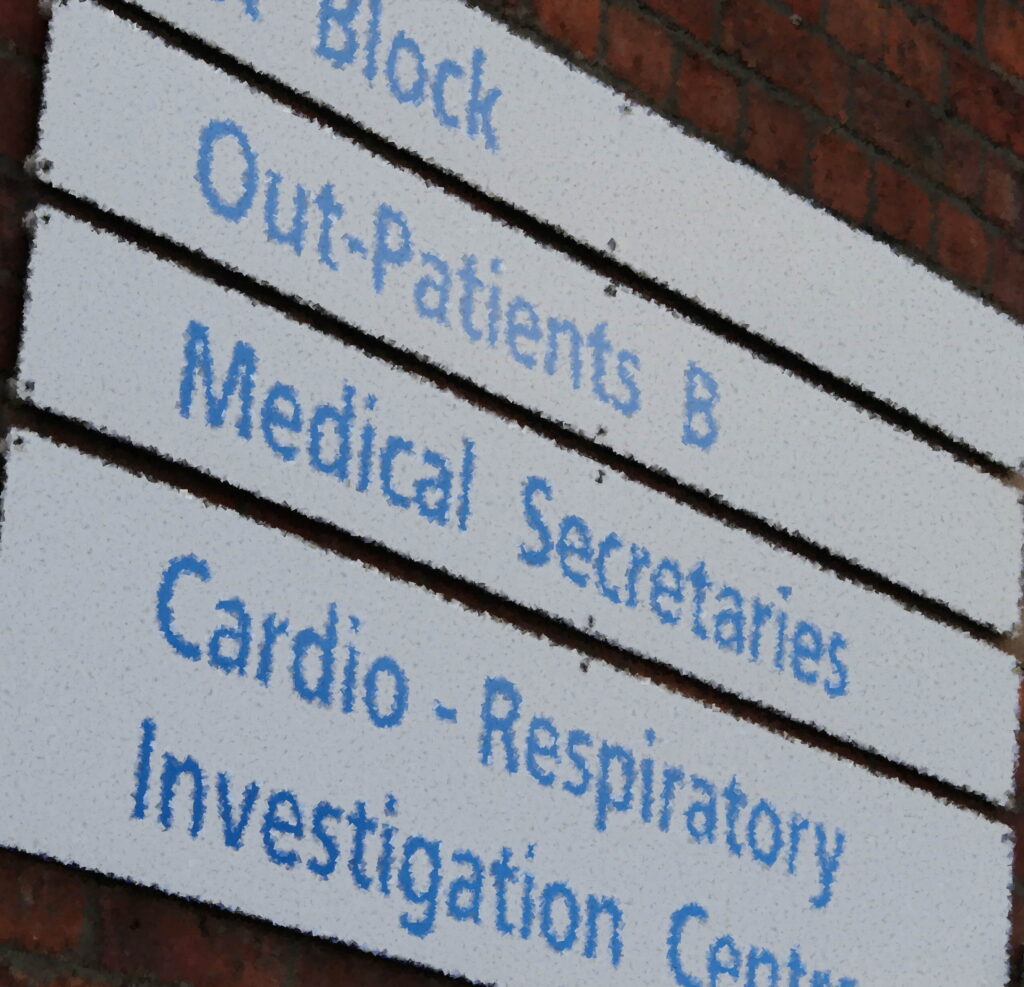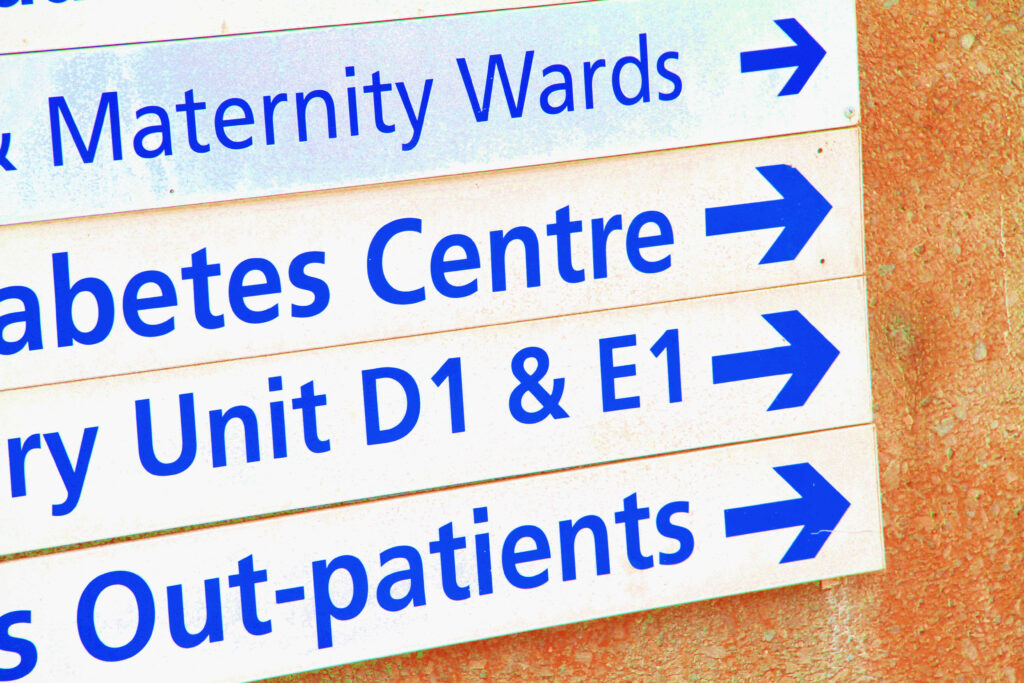Leaders from across the health tech sector predict a year of accelerating digital transformation in the NHS; one that will increasingly be driven by AI. From the development of decision support and robotic surgery to a renewed focus on cybersecurity and data interoperability, Highland Marketing’s clients explore the trends that will shape the future of healthcare this year and beyond.
James Norman is an experienced NHS CIO who now works as EMEA health and life science director for Pure Storage. Speaking as a member of the Highland Marketing advisory board, he said:
“AI decision support is about to become mainstream, and in 2025 we will start to see it embedded in all aspects of healthcare provision.
“Robotic surgery supported by AI will become available through more remote satellite locations, including retail health clinics. While digital GPs for minor ailments will start to supplement current GP services, to reduce demand on services and streamline patient pathways to appropriate care.
“AI will also support the spread of telehealth or remote monitoring using a wide range of tools, including implantable devices, wearables, nanobots, and intelligent everyday systems from toilets to mirrors and surveillance apps, all of which have been maturing over the last few years but are being adopted into everyday life through consumer services.
“In the longer term, all this will have implications for clinical training. The availability of AI decision support will reduce some of the learning requirements for junior doctors. But it will also create new requirements, such as being able to understand and safely use LLMS and AI-driven diagnostic algorithms.
“It will also have implications for suppliers. AI puts huge demands on power supplies and physical space, just as sustainable IT is becoming more and more important to deliver on net zero commitments.
“Smaller, more energy efficient, more powerful capabilities will be required, and we’re already seeing movement in this direction, with partnerships to reduce the energy consumption of chips or create powerful, energy efficient storage arrays.”
Andrew Edge, data and AI lead at leading data transformation consultancy, Simpson Associates, said:
“The notion of AI and relevance for data management will become much more widely adopted within the health sector in 2025, and consequently the phenomenal data and analytical capabilities it will bring.
“Up until now the focus has been driving value from AI by automating back-office tasks and activities, such as extraction of clinical information, which in turn frees up time for care of the patient.
“The NHS has already acknowledged that AI can help deliver better patient outcomes and support its staff. In 2025, its focus must be on ensuring quality and governance, as well as putting the data and AI tools in place to deliver on this opportunity. This enables AI to be utilised beyond task automation and deliver against the key strategic NHS goals including achieving “more with less.”
“The question of interoperability will also continue to be a big challenge as we further develop a general population health approach. The Sudlow Review emphasised that we need to get better at using health data in a multi-agency approach. The good news here is technology enhancements will help achieve this.”
Assad Tabet, senior vice president healthcare and life sciences UKI and Europe, Mastek:
“The government may be developing a 10 Year Health Plan to stabilise and reform the NHS, but in technology I expect to see a continuation of trends that we have already seen.
AI: We are moving into an era in which AI will no longer be a standalone term or solution, but something that is embedded into all new operations and our everyday lives. We have already seen this with the latest versions of Apple iOS and Android devices, which have AI assistants for content creation, summaries and research. This will become the norm in health, as in other areas.

Cyber security: I see more AI services and technologies being used within cyber security services to detect breaches and nullify threats where it can. Healthcare organisations will need to prioritise cyber security services to protect patient data amid increasing digitisation.
Digital mental health: Virtual assistants,digital twins and chatbots will increase access to digital mental health services by making curated and clinically validated information available online for practitioners and patients. More personalised and joined-up services will be tailored to individual needs.
Data interoperability and sharing: Platforms like the Federated Data Platform and secure data environments will be leveraged to create new population health insights and improve overall health outcomes. These platforms will also enable better communication and collaboration between healthcare providers.
Digital prevention: Increased promotionof screening, vaccinations and other preventative services will feature significantly in 2025. We will see national team members working with integrated care systems to identify suitable digital tools and/or therapeutics to implement and support patient cohorts with preventative measures.
Chris Goldie, CEO, Vertex in Healthcare, said:
“A competitive marketplace where innovators can thrive, and where innovation can flourish for the NHS. That’s the message coming through strongly from the government as 2024 ends and 2025 begins. It’s to be lauded.
“To work effectively it needs to be applied consistently, to ensure that the NHS can harness the full ecosystem of suppliers, and that it isn’t locked in with vendors that have always been used but where development doesn’t reflect the urgency of demand and evolving healthcare service models.
“The diagnostics environment is one part of healthcare fortunate to be relatively digitally mature, with a market for key systems that has benefitted from longevity. Modernising diagnostic imaging also sits at the centre of national commitments.
“The opportunity in 2025 is to work with those suppliers that demonstrate their technological offers are still relevant, and to modernise procurement functions such that new entrants can overcome any remaining complacencies from historic vendors who fail to prove responsiveness to pressures faced at the diagnostic coalface.”
Chris Scarisbrick, deputy managing director for UK and Ireland, for Sectra, said:
“The world is a more dangerous place as we head into 2025 – carrying with it sustained risks for high value targets, healthcare included. Reports that cyber-attacks have “plateaued” have been accompanied by digital health headlines showing the human cost associated with service disruption, delayed care, and even “harm” when systems are compromised.
“The technology sector serving healthcare should therefore be prepared for increasing requirements around cyber credentials in the coming year; and arguably should take a more proactive approach.
“Cloud based provision – which is continuing to grow at pace in diagnostic imaging – can help, where the cyber expertise of large cloud providers can be leveraged in ways not possible on-premises.
“But we must also adopt best practice at every point possible as suppliers – whether that’s compliance with Cyber Essentials Plus, IS027001, or CSA STAR accreditations. Such compliance needs to transcend throughout supply chains – to ensure every link is as strong as it needs to be.
“2024 has been a year of substantial digital progress in healthcare diagnostics. We have a collective duty – across the health service, and as suppliers, to safeguard that progress against cyber adversaries.”
Dean Moody, healthcare services director, Airwave Healthcare, said:
“As 2025 reveals national plans to restore the NHS, leveraging large scale digital transformation will undoubtedly have centre prominence. But opportunities for more rapid and immediate transformation can also be realised through momentum already building within the NHS.
“As 2024 drew to an end, more than 150 NHS organisations had made media services free for patients. Some had done this hospital-wide, others on individual wards. The reason: not only to entertain and distract patients with home comforts during their recovery, but to inform, educate and stimulate.
“The appetite to scale this further still will continue to grow in 2025. More and more trusts will refresh ageing patient entertainment systems with modern technology that can educate patients about their specific care and alleviate pressures on busy wards by allowing patients to request services without needing to ask additional questions of nursing teams.
“Hospitals have streamed content for younger patients – putting them at ease as they are moved from the ward for important imaging. They have created calmer elderly care wards. And they have even enhanced independence for severely injured and disabled patients, who have been able to operate screens through eye movement.
“It’s just a small selection of how media technology is enhancing patient experience – and I predict many more will embrace this equitably and without cost to patients in the year ahead.”
Jackie Henderson, chief client officer, and Stuart Lawrie, director, client technical services, Excelicare:
“There are several areas of technology advancement that electronic patient record vendors will be considering for inclusion in their product roadmap and development cycles. One of these areas is the wider use of “Smart on FHIR” [a healthcare standard that enables applications to access clinical information through a data store].

“This will drastically improve the sharing of patients’ healthcare data between disparate systems and NHS apps, which will enable a more comprehensive view of the patient, with the aim of improving care and reducing mistakes in case.
“The idea that Generative AI will be transformational for healthcare apps is gaining widespread attention, but there are legitimate concerns about its safe use that should be considered, too. If these can be resolved, these innovations should help to promote safe and innovative health tech solutions for wider patient populations.
“There will also be emphasis on including the patient more in their own healthcare through the use of patient technologies and asynchronous healthcare interactions, with the aim of enabling the healthcare provider to monitor patients, in order to track health and enable earlier intervention to correct problems.”
Jane Stephenson, CEO, SPARK TSL, said:
“As we move into 2025, I believe we’ll see automation and interoperability take centre stage in the NHS. Automation will be key to easing the workload on healthcare staff, allowing them to spend more time focusing on patient care rather than administrative tasks. Simple but effective changes, like streamlining meal ordering or routing service requests, can make a real difference to day-to-day operations.
“Interoperability is another area where we’ll see significant progress. The ability for systems to work seamlessly together will be vital for real-time data sharing, reducing duplication, and improving collaboration across teams. These developments won’t just enhance efficiency but will ultimately improve outcomes for patients. It’s an exciting time for healthcare technology, and I’m optimistic about how these advancements will help tackle some of the sector’s biggest challenges.”
Kate Quirke, chief executive officer, Alcidion Group Limited:
“Accelerated maturity in generative AI, large language models, and emerging technologies that can help automate labour intensive tasks, could all help to address NHS challenges heading into 2025.
“Discussion at Digital Health Rewired 2024 surprised some delegates, who learned of a 2024 ranking of the world’s top smart hospitals. It positioned its first NHS trust at number 72. Set against a drive to advance beyond the “foothills of digital transformation”, as described by Lord Darzi, smart health, applied well could now make a meaningful difference to big policy commitments such as productivity gains, but also to daily pressures.
“There is an appetite, and an urgency, to do things differently. Generative AI, for example, has the potential to redefine how clinical teams interact with technology and transform the patient experience. Natural language processing and conversational interfaces will make electronic patient record systems more intuitive, reducing cognitive burden and the risk of burnout.
“Imagine a clinician speaking naturally to an AI assistant to generate detailed summaries, write handover notes, draft prescriptions, or retrieve critical patient history – all in seconds. As smart technologies mature, integrating them into clinical settings and clinical technology platforms, can release substantial time, but can also harness vast amounts of clinical data to support and enhance every decision for patient care.”
Kelly Woodcock, head of marketing UKI Nordics, healthcare systems and technologies, Baxter, said:
“Challenges facing the NHS have been clearly identified in 2024. How we fix those problems is a question 2025 must better resolve, and technology has a significant part to play.
“Increased adoption of new and innovative technology, and better utilisation of existing systems, has the potential to support clinical decision making, reduce administrative burdens for nurses, enhance efficiencies, and address capacity.
“But that must be accompanied by effective workflow and patient flow. Digitisation of inefficient workflows will only digitise chaos. Creating more harmonious environments means driving connectivity of devices and IT, ensuring insights flow into clinical systems, and asking more than how this can be achieved – but why.”
Dr Mark Ratnarajah, UK managing director, C2-Ai:
“Health tech companies should be able to “start-up and scale-up” in supporting the NHS with innovative technology: a pledge direct from health and social care secretary Wes Streeting at an ABHI parliamentary reception in November.
“As 2025 dawns, the latter part of his statement – scale – is particularly important; both for companies providing the tech, and for the NHS itself. Policy momentum has placed significant emphasis on wider adoption. NHS England wants to address both the discoverability and deployability of technologies.
“Lord Darzi called out the need to address sub-scale uptake of applications that improve quality and efficiency. And the newly published innovation ecosystem review led by Professor Roland Sinker calls out the need to spread “proven products”, with a failure to do so risking unwarranted variation and a perception that companies investing will struggle to grow.
“With urgency to embrace technology equitably, the NHS can little afford the time and effort required to reinvent ad infinitum. The bar must be set high in choosing what to scale. But once innovations are proven in the field with evidence in clinical practice and academic rigour, then funding and mechanisms must be in place to scale at pace and everywhere, so all patients can benefit. 2025 must be the year to make this happen.”
Paul Bailey, general manager, Mindray UK, said:
“Connecting all devices and data across the healthcare estate has become an even more urgent requirement, given renewed national objectives for the NHS. Investing in underlying infrastructure will be one enabler, but interoperability across every device must also come back into scrutiny in the year ahead.
“Connected devices must harness telemetry for busy healthcare professionals – from staff on general wards, to nurses in ICU, to surgeons in operating theatres. All need to be presented with data in efficient and effective ways, to help them enhance patient outcomes and respond to demands ranging from patient safety, to productivity, to waiting lists.
“And, as value-based procurement comes into focus during 2025, consideration must be given to the value of technology in supporting modern workflows, including the ability for staff to monitor and act on data remotely. When technology works, great things can start to happen.”
Paul Charnley, senior healthcare advisor for St Vincents Consulting, said:
“In 2025, transformation will remain the cornerstone of progress for the NHS. Almost all transformation initiatives now have a digital component, but digital must serve as a supporting element to clinical and operational change, not exist as a standalone effort.
“Embedding digital tools into these broader transformations is essential to achieving meaningful impact. Financial pressures will persist and while it’s too early, post-election, to anticipate major investments in digital, the guiding principle of moving from analogue to digital will endure.
“With over 90% of NHS providers covered by electronic patient records, the focus will shift from go-lives to stabilisation and optimisation. Yet significant analogue systems remain, underscoring the importance of ‘thinking digital’ to enable true transformation.
“Cloud migration will accelerate, but cybersecurity must remain a priority. Recent cyber-attacks and IT outages show there’s still much to learn, and prevention must be prioritised through adequate investment.
“System-wide collaboration will advance as we prioritise shared EPRs and connected records. These tools not only improve interoperability but ensure data is available wherever it’s needed to keep people healthier and out of hospital. The anticipated Data (Use and Access) Bill will help make data sharing safer and more effective, a vital step for system-wide working in 2025.”






Recent Comments